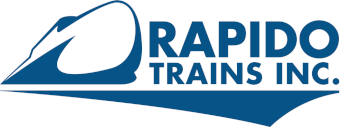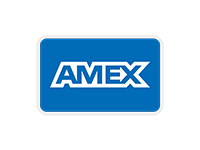By Bram Bailey
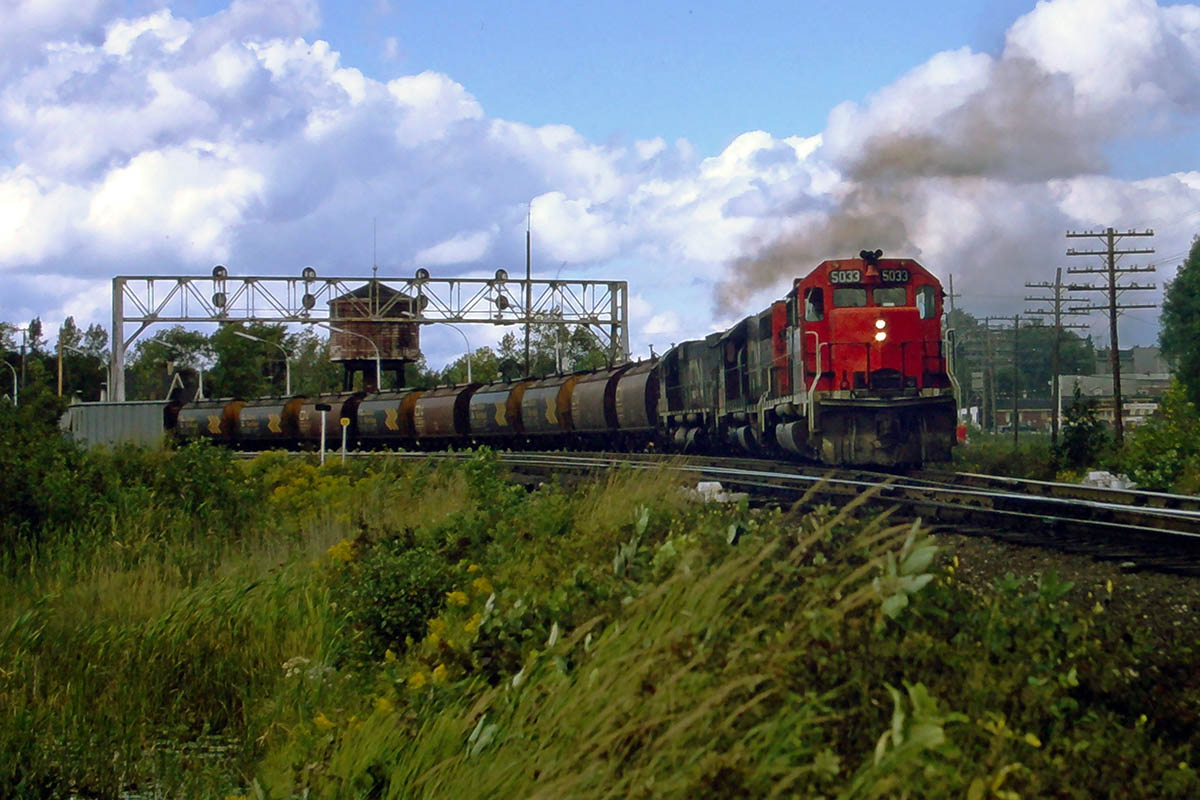
SD40 #5033 leads another SD40 and an M-636 as the southbound ore train has just arrived at Washago on the Newmarket Sub on September 5, 1974. In a few hundred feet, they would depart on the Bala Sub. Photo by J. S. Sakal, Collection of Bram Bailey.
One thing that was unique to Ontario was the partnership between the Canadian National (CNR) and Ontario Northland (ONR) in transporting enriched iron ore pellets from the mines located along the ONR to Dofasco in Hamilton. From the mid-1960’s until 1990 these unique trains were a common sight along the route from Dane to Hamilton.
The lading was processed, enriched iron ore. When low grade ore is processed, the moisture and many of the impurities are taken out. It is then combined with a binder and flux to make a more highly concentrated iron ore which is preferred in steel making. The final product consists of ore pellets roughly the size of marbles. Their lack of moisture and round shape makes them much easier to handle than conventional iron ore.
Adams Mine, just north of Englehart, at Dane, was the first iron ore mine and concentrating plant to open on the Ontario Northland. This occurred in 1964. Originally the mine was owned by Jones & Laughlin Steel and the ore was shipped to various J&L steel mills in the USA. The mine was named after Avery C. Adams, formerly Jones & Laughlin Steel’s Chairman of the Board and CEO. Initially, the ore was hauled in conventional open hoppers provided proportionally by the railways that the operation traversed (ONR, CNR and NYC). In 1971, Dominion Foundries and Steel Co., Ltd (Dofasco) purchased the mine and from that point on, the output of the mill was shipped to their Hamilton steel mill.
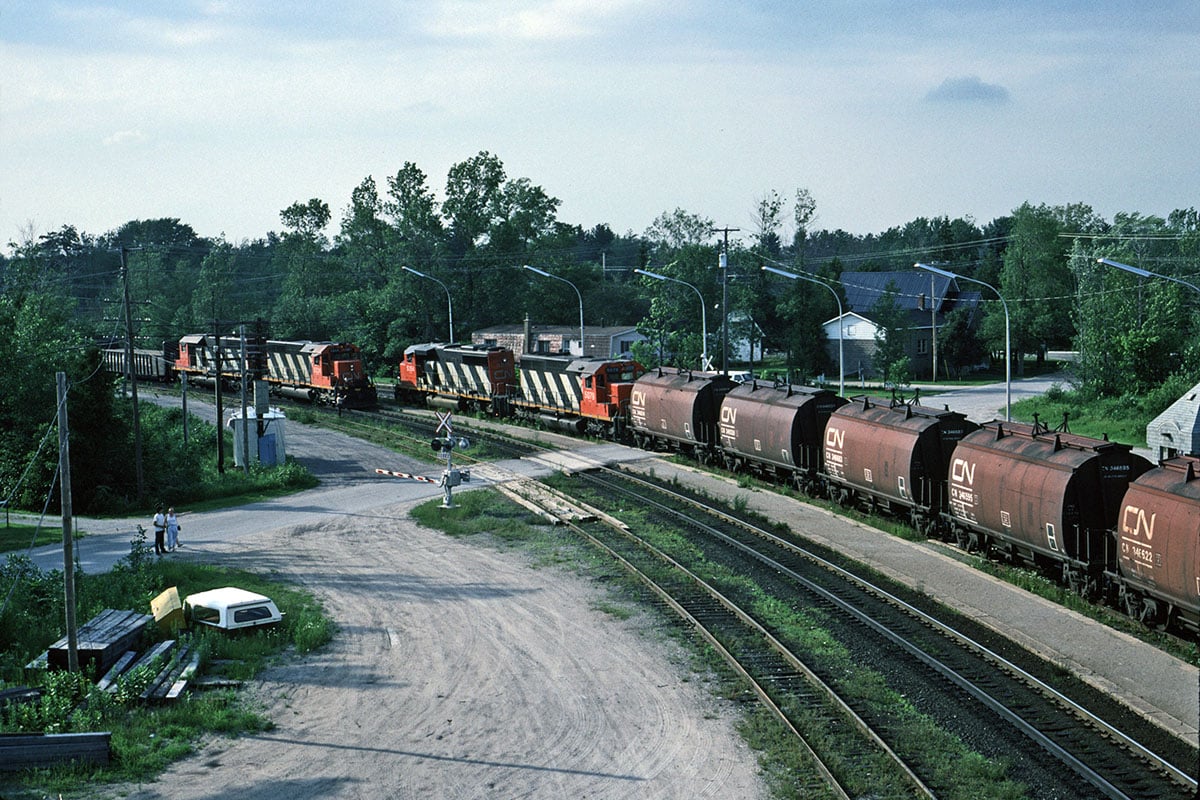
The northbound empty ore train, lead by SD40-2W #5254 and SD40 #5079, meets a southbound arriving on the Bala Sub at Washago. The Ore train is on the Newmarket Sub Passing siding and will remain there until the Southbound Northlander arrives on the Newmarket Main line. Once the passenger train arrives, the ore train will continue on to North Bay. Photo by Bram Bailey July, 5, 1990.
Further south, near Temagami, Sherman Mine opened in 1968. The mine was owned by a partnership of Dofasco and Cleveland Cliffs. The mine was named after Frank A. Sherman, Dofasco’s Chairman of the Board who passed away in 1967. The ore from this mine was shipped to Dofasco.
From 1971 on, iron ore pellets from both facilities were bound exclusively for Dofasco in Hamilton, Ontario. The beauty of iron ore pellets is, once processed, they are perfectly dry. When transported in open hoppers, moisture from rain and snow would cause the lading to freeze solid in the winter months. Dofasco’s subsidiary, National Steel Car Company (NSC), had a solution. Enclosed cars would keep the lading dry so when it arrived at the steel mill the ore would roll out of the cars like marbles no matter what the temperature was or what the weather was doing on the journey from the mine to the mill.
At first look these new cars appeared to be a shortened version of a cylindrical covered hopper. The fleet of cars were split in ownership between the Ontario Northland and Canadian National. They were commonly referred to as "barrel ore cars”. Three groups of cars were built by NSC. The original short barrel cars were 35 feet in length and were delivered in 1967. Later it was determined that the length of the car being so close to that of the standard length of rail caused undue wear on the rail joints. In 1973, a second group of cars were delivered that were 42 feet long. These new cars were called “long barrel cars.” The final group of cars were built in 1975 and were almost carbon copies of the 1973 cars. A total of 382 cars were built. Both short and long barrel cars were rated for 100 tons, but the longer cars were much easier on the track.
The cars were provided by the railways proportionally to the mileage over which they hauled them. As a result, 75% of the cars were provided by CNR and the other 25% by the ONR. All of the Canadian National Cars were delivered painted oxide red with the CN wet noodle scheme in white. The first order of Ontario Northland short barrel cars were painted green and lettered white in their progressive scheme. The two orders of long barrel cars arrived painted blue with yellow lettering in the chevron scheme that was introduced in 1973.
The barrel cars had a device that resembled a tire on a shaft extending upwards from each of the loading hatches. As the cars were pushed through the loadout, a pair of elevated ramps, called “Scrolls,” engaged the tires forcing the hatches open. It took about 60 seconds to fill each car and another minute to position the next car to be filled. At this rate, a 40-car train could be loaded in an hour and twenty minutes. This rapid loading capability would allow the crew that brought in the train to load it and return within the confines of the 12-hour service law.
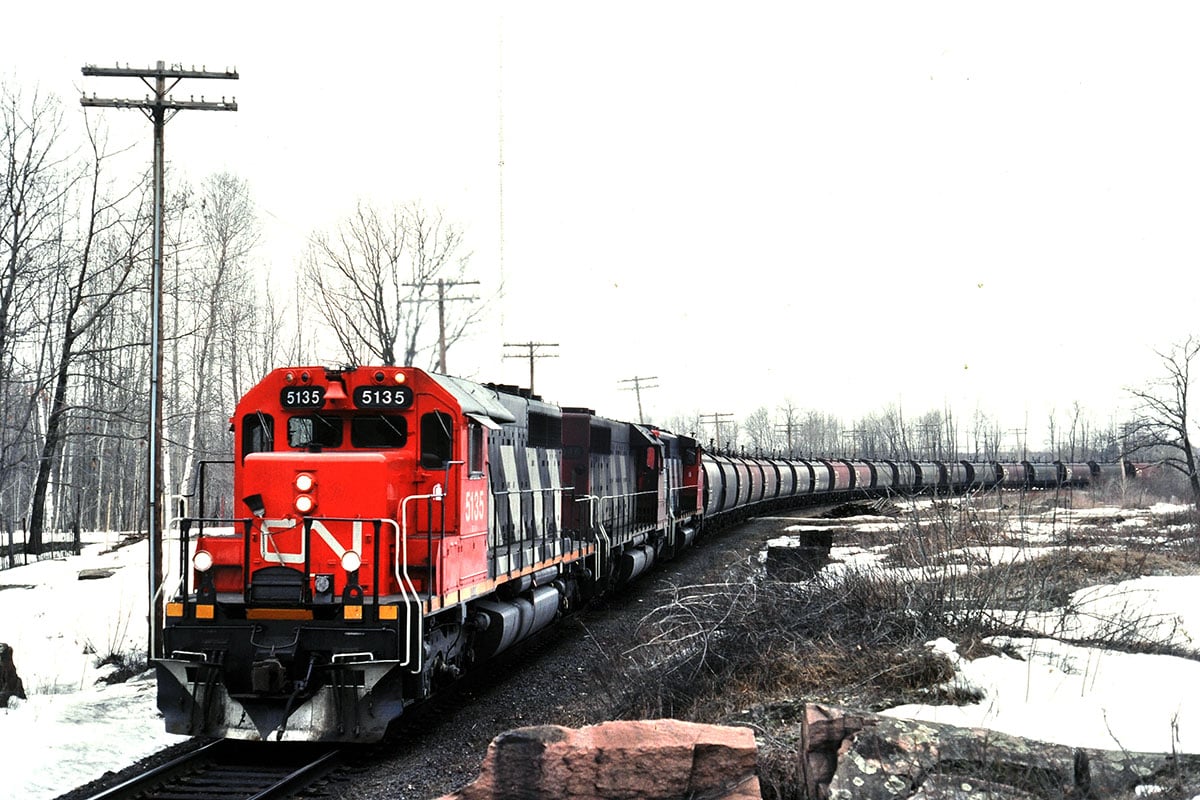
SD40 #5135 leads another SD40 and an SD40-2W as they depart Washago on the Bala Sub with a loaded ore train in March of 1989. Photo by Bram Bailey.
A typical train of 40 loaded ore cars would be 4000 trailing tons, making it comparable in weight to a train of 100 conventional 40-ton box cars. The loaded ore trains made a sound unlike anything else on the railway. It was a sort of hollow rumble that once you have heard it, you would never forget it.
The loading systems in each of the mines were slightly different. Sherman required the cars to be stationary while being loaded, Adams was set up such that the train could be loaded while moving at a very low speed. The system at Adams Mine was ideal for the long cars, the short cars would require the train to stop while loading them. For this reason, the long cars were preferred for Adams mine and Sherman could accommodate both types with equal ease. Since the short barrel cars only made up 31% of the roster, it was not difficult to keep Adams supplied with long barrel cars.
Trains from Adams and Sherman mines typically consisted of 40 cars each. They would be combined at North Bay and operate from there to Dofasco, in Hamilton, as a single 80 car unit train. Typically, 9000 to 12,000 HP was required which was supplied by Canadian National C-630, M-636 and SD40’s in the early years and later by a stable of SD40-2, SD40-2W and GP40-2W units. The train would run south on the Newmarket Sub through Muskoka as far as Washago. From there it would continue southbound on the east side of Lake Simcoe on the Bala Sub. Once it reached Doncaster, it would proceed west on the York Sub. They would change crews and sometimes add power at Jane Street and then over the Halton Sub to Burlington West where it continued through Bayview Junction toward Hamilton on the Oakville Sub. Once in Hamilton it ran on the Grimbsy Sub to Ottawa St. where it entered the lead to Parkdale Yard. From there it would go left at Kenilworth Avenue on the lead to the N&NW spur around Dofasco Central Shipping and then across Kenilworth again before terminating at Dofasco’s receiving point. The reverse would be true for empties returning northbound. The CN crews that operated these trains were based at MacMillian Yards.
From the Ontario Northland clay belt to Muskoka’s cottage country to metropolitan Toronto and Hamilton this train was a daily occurrence. It was a favorite of railfans because there was always some interesting power up front and just to watch the symmetry of 80 cars, all of similar design, traversing the countryside to and from the steel mill made it worth the effort every time.
In early 1990 Dominion Foundries terminated its relationship with the Adams and Sherman mines. The last ore left the Sherman Mine on May 30, 1990 and the last train pulled out of Adams Mine on June 22, ending 25 years of very profitable business for both the Canadian National and Ontario Northland.
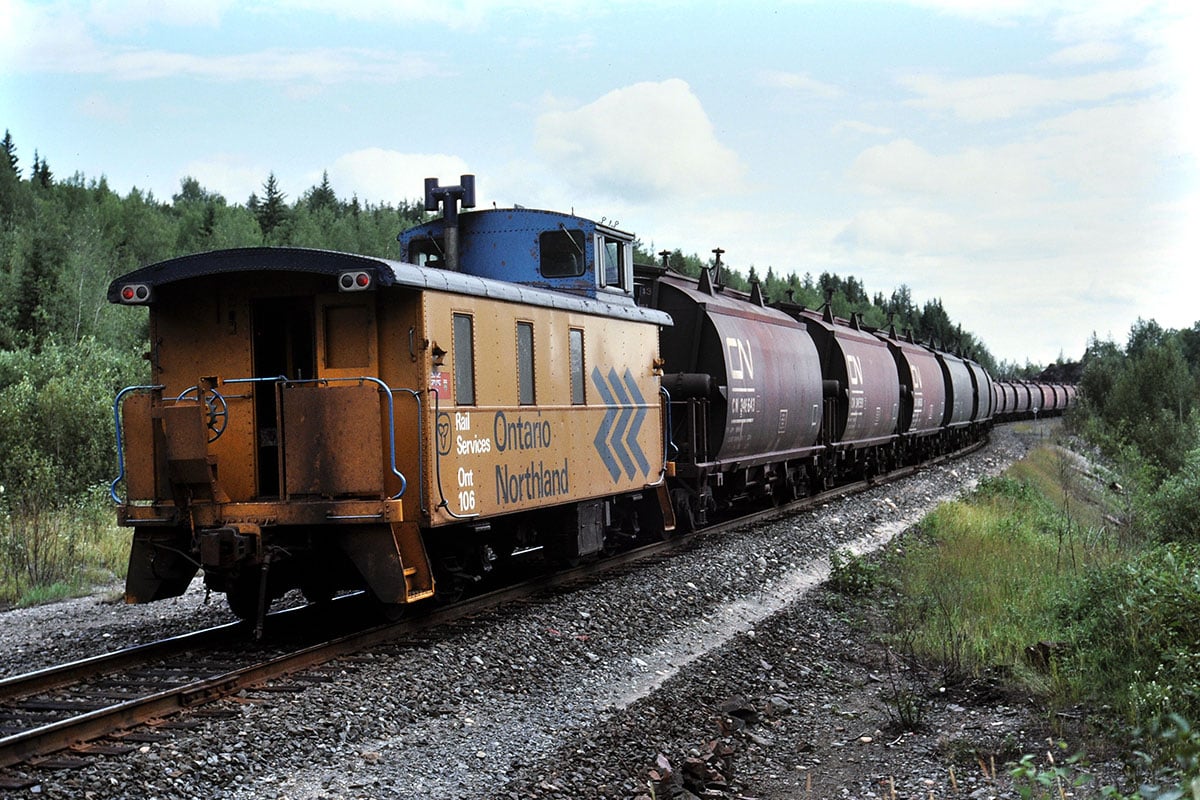
ONR Van #106 brings up the rear of the loaded ore train from Adams Mine. The train has just passed through Adams Jct. and is heading south on the Ramore Sub towards Englehart in August of 1989. Photo by Bram Bailey.
When the barrel cars were no longer required for this service some of the ONR cars were leased to Dofasco to move the ore from the lake freighters into their Hamilton mill. The balance of the cars sat in storage awaiting buyers. Eventually most of the cars were “recycled” to leasing companies for various applications. One of the more unusual applications was when CN converted some to Scale Test Cars.
Roster of NSC Barrel Ore Cars
| Built | Style | Railroad | Number Series | Qty | % of Fleet |
|---|---|---|---|---|---|
| 1967 | Short Body | Canadian National | 346000-346084 | 85 | 22% |
| 1967 | Short Body | Ontario Northland | 6500-6534 | 35 | 9% |
| 1973 | Long Body | Canadian National | 346500-346553 | 54 | 14% |
| 1973 | Long Body | Ontario Northland | 6600-6639 | 40 | 10% |
| 1975 | Long Body | Canadian National | 346554-346700 | 147 | 38% |
| 1975 | Long Body | Ontario Northland | 6640-6660 | 21 | 5% |
| Total Canadian National Cars | 286 | 75% | |||
| Total Ontario Northland Cars | 96 | 25% | |||
| Total Cars Built | 382 | ||||
A more complete history of this operation was just published in the Fall/Winter Issue of the Ontario Northland Historical and Technical Society’s newsletter The Northlander. You can become a member of the ONRH&TS for $25/year which includes our ONR Calendar as well as a subscription to our newsletter, Contact: ONRH&TS, 801 Lakeshore Rd., North Bay, ON, Canada, P1A 2G7 or email [email protected] .
References
Ontario Northland Employee Timetable 69, dated October 29th, 1978.
Canadian National Employee Timetable 54, dated June 1st, 1986.
Acknowledgements
Many thanks to Dan Dell’Unto, Dan Darnell, Philip Koning, Steve Lucas, Doug Murray, Rick Robitaille, Ken Stroebel, Chris van der Heide and Steve Woolfrey for answering my many questions on this operation making this article possible.
